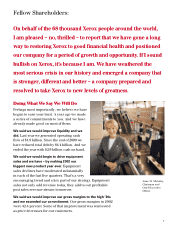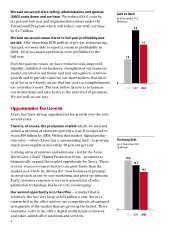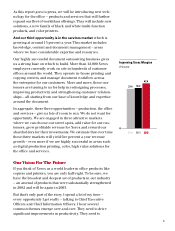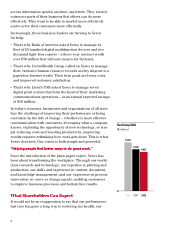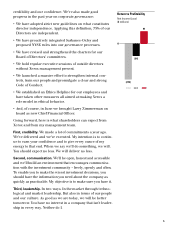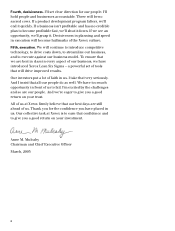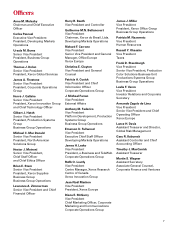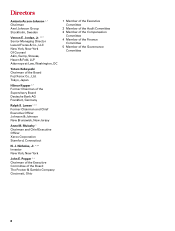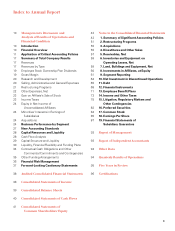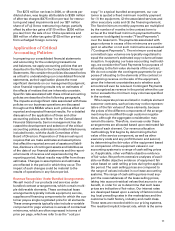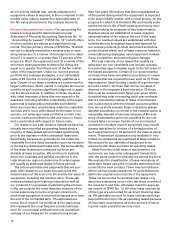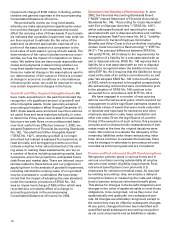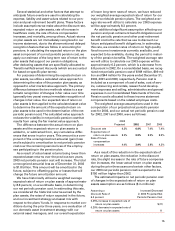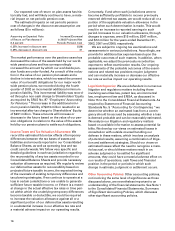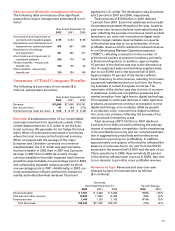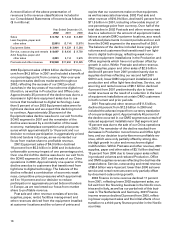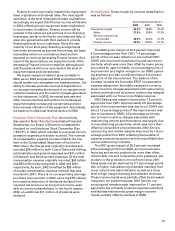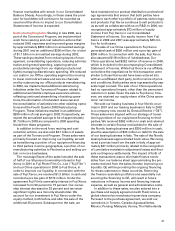Xerox 2002 Annual Report Download - page 13
Download and view the complete annual report
Please find page 13 of the 2002 Xerox annual report below. You can navigate through the pages in the report by either clicking on the pages listed below, or by using the keyword search tool below to find specific information within the annual report.
11
The $273 million net loss in 2000, or 48 cents per
diluted share, was largely attributable to $339 million
of after-tax charges ($475 million pre-tax) for restruc-
turing and asset impairments and our $37 million
share of a Fuji Xerox restructuring charge, partially
offset by after-tax gains of $119 million ($200 million
pre-tax) from the sale of our China operations and
$69 million of after-tax gains ($103 million pre-tax)
from unhedged foreign currency.
Application of Critical
Accounting Policies:
In preparing our consolidated financial statements
and accounting for the underlying transactions
and balances, we apply accounting policies that are
described in the Notes to the Consolidated Financial
Statements. We consider the policies discussed below
as critical to understanding our consolidated financial
statements, as their application places the most
significant demands on our management’s judgment,
since financial reporting results rely on estimates of
the effects of matters that are inherently uncertain.
Specific risks associated with these critical accounting
policies are described in the following paragraphs.
The impacts and significant risks associated with these
policies on our business operations are discussed
throughout this MD&A where such policies affect our
reported and expected financial results. For a detailed
discussion of the application of these and other
accounting policies, see Note 1 to the Consolidated
Financial Statements. Senior management has dis-
cussed the development and selection of the critical
accounting policies, estimates and related disclosures,
included herein, with the Audit Committee of the
Board of Directors. Preparation of this annual report
requires that we make estimates and assumptions
that affect the reported amount of assets and liabili-
ties, disclosure of contingent assets and liabilities as
of the date of our financial statements and the report-
ed amounts of revenue and expenses during the
reporting period. Actual results may differ from those
estimates. Changes in assumptions and estimates
are reflected in the period in which they occur. The
impact of such changes could be material to the
results of operations in any future period.
Revenue Recognition Under Bundled Arrangements:
We sell most of our products and services under
bundled contract arrangements, which contain multi-
ple deliverable elements. These contractual lease
arrangements typically include equipment, service,
supplies and financing components for which the cus-
tomer pays a single negotiated price for all elements.
These arrangements typically also include a variable
component for page volumes in excess of contractual
minimums, which are often expressed in terms of
price per page, which we refer to as the “cost per
copy.” In a typical bundled arrangement, our cus-
tomer is quoted a fixed minimum monthly payment
for (1) the equipment, (2) the associated services and
other executory costs and (3) the financing element.
The fixed minimum monthly payments are multiplied
by the number of months in the contract term to
arrive at the total fixed minimum payments that the
customer is obligated to make (“Fixed Payments”)
over the lease term. The payments associated with
page volumes in excess of the minimums are contin-
gent on whether or not such minimums are exceeded
(“Contingent Payments”). The minimum contractual
committed copy volumes are typically negotiated to
equal the customer’s estimated copy volume at lease
inception. In applying our lease accounting methodol-
ogy, we consider the Fixed Payments for purposes of
allocating to the fair value elements of the contract.
We do not consider the contingent payments for pur-
poses of allocating to the elements of the contract or
recognizing revenue on the sale of the equipment,
given the inherent uncertainties as to whether such
amounts will ever be received. Contingent Payments
are recognized as revenue in the period when the cus-
tomer exceeds the minimum copy volumes specified
in the contract.
When separate prices are listed in multiple element
customer contracts, such prices may not be represen-
tative of the fair values of those elements, because
the prices of the different components of the arrange-
ment may be modified through customer negotia-
tions, although the aggregate consideration may
remain the same. Therefore, revenues under these
arrangements are allocated based upon estimated fair
values of each element. Our revenue allocation
methodology first begins by determining the fair
value of the service component, as well as other
executory costs and any profit thereon and second,
by determining the fair value of the equipment based
on comparison of the equipment values in our
accounting systems to a range of cash selling prices
or, if applicable, other verifiable objective evidence
of fair value. We perform extensive analyses of avail-
able verifiable objective evidence of equipment fair
value based on cash selling prices during the applica-
ble period. The cash selling prices are compared to
the range of values included in our lease accounting
systems. The range of cash selling prices must sup-
port the reasonableness of the lease selling prices,
taking into account residual values that accrue to our
benefit, in order for us to determine that such lease
prices are indicative of fair value. Our interest rates
are developed based upon a variety of factors includ-
ing local prevailing rates in the marketplace and the
customer’s credit history, industry and credit class.
These rates are recorded within our pricing systems.
The resultant implicit interest rate, which is the same


